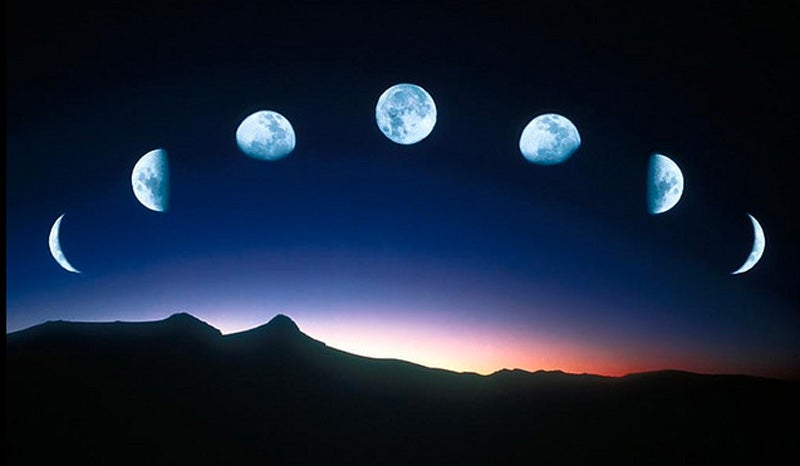Yutu can come back to life!
ListenChina Space Agency says reports of Yutu’s Death were premature. There is some kind of mechanical problem, but communications has been re-established with the lunar rover that successfully travelled about 300 ft., sampling the soil and doing some ground-penetrating radar studies before it put it self to sleep several weeks ago at the onset of lunar night. Kepler satellite has reached 3,500 exoplanet candidates – 167 are confirmed as planets but tally indicates that 70% of stars could have at least one planet. Check out pre-dawn planets Mars, Saturn, Venus, Mercury. Jupiter available in the evening in Gemini.
February 24, 2014
[Dave Heller] With cloudy skies forecast for the Philadelphia region over the next few days, this evening marks a great chance to get jazzed about Jupiter. Let’s gaze aloft with Derrick Pitts, chief astronomer at the Franklin Institute. I’m looking overhead — what part of the sky, Derrick?
[Derrick Pitts] Well, the part of the sky you’re seeing is really the winter circle of stars right now. And in the winter circle of stars, one of the main members of that group is the Gemini, the twins. And among the stars of Gemini we can find the bright and largest planet of the solar system, Jupiter. So Jupiter’s really easy to see in the evening sky right now, it’s up all night and it gleams as a steady, bright object with no twinkle. And that lack of twinkle is the way you can easily identify planets from stars.
Now later in the week when those clouds part, what’s available in the morning sky?
Well hopefully the weather will allow us to see in the predawn sky four other planets. So if we start at 6 a.m. and we go out and we look up, what we’ll see is starting from sort of the southwestern portion of the sky we’ll see slightly reddish or pinkish Mars. And then moving back to the left or towards the east we’ll come across Saturn. Little further over, over on the eastern side now, we’ll see bright Venus. And then down close to the horizon we’ll find Mercury — small, but bright. You might need binoculars, you will need a clear view of the western horizon and you’ll be able to see Mercury. Now the cool thing about all this is that the moon slides along among these planets during the course of the week. So certainly by the end of the week you’ll be able to see over on the eastern side of the sky at 6 a.m., say on Thursday, you’ll see the moon not far from Venus. And then the very next morning Friday, you’ll see the moon not far from Mercury. So if you can identify the moon’s position on Friday, down below it or right nearby you’ll see a small but bright object and that will be Mercury.
Let’s keep talkin’ about the moon. I understand next month it’ll be even easier to calculate its sojourn.
Well you know the end of the month comes at the end of this week, so March 1 is on Saturday. We begin a whole new month and this month is a great month to follow the lunar phases. Because as it turns out, the moon will hit each of its designated phases every eight days. So new moon is March 1, first quarter moon comes on March 8, full moon comes on March 16, third quarter – or last quarter – moon comes on March 24, and then we end up the month on March 30 with new moon again. So if you just follow the eights of this month, every eight days you’ll hit the phase. Now the interesting thing about this is that if you observe the same time every night, you’ll notice that the moon’s position changes dramatically. And especially when we get around to last quarter because last quarter doesn’t rise until very, very late at night. And you might be better off waiting a few days and trying to sight the moon in the daytime sky, around 9 or 10 p.m. over on the western side of the sky. And if you see it over there, what you’re really seeing is sort of the last distance that the moon has to travel to that western position in the morning sky, back around to new moon just a few days later coming up right near the sun. So since we can’t really look at the moon that late in the phase because it’s too close to the sun, well, if we just wait until those last few days around the last quarter or maybe a day or two later, we can catch it in the morning sky after sunrise, around 9 or 10 in the west.
-

Photo by Flickr user bruna :]
Derrick, moving onto the medical update portion of the program: I understand a pulse has been detected on YouTube previously declared deceased.
Yes, we finally did get a signal back from the Yutu rover on the surface of the moon, the Chinese Space Agency’s visitor to the moon. After two weeks after being asleep during the lunar night, it didn’t send a signal back automatically as it was supposed to, so it was thought perhaps that the rover had met a demise trying to suffer the -200 degree plus temperatures. But as it turns out, it might have been just delayed. Maybe it had hit the snooze button or something. They were finally able to establish communications with the rover, and it turns out that there are some mechanical difficulties with it. But at least they have been able to establish regular communications, and that gives hope that they can perhaps get full rehabilitation and start to do work on the surface again.
-
China moon rover “Yutu” can receive signals from earth again
Lastly, update us on the successes of the Kepler satellite survey.
I think one of the greatest discoveries and accomplishments of the last decade in planetary exploration has been the work of the Kepler satellite. It’s sitting in orbit around Earth, looking out into space toward the constellation or an area of the sky not far from the constellation Cygnus, a well known summer constellation. The distance in which it’s looking is a group of stars about 3,000 light years out. It’s a very small section of the sky that Kepler is observing, and what it’s trying to do is identify whether or not there are any planets orbiting any of those stars out in that direction at that distance. To date, after about 3 years, the data shows that Kepler has identified 3,500 exoplanet candidates. So when we do expand this out, what we find is that chances are pretty strong that there are more planets in our galaxy than there are stars. So if at least one planet was orbiting every star in our galaxy, well that would be an equal number of planets to stars — somewhere on the order of 350 billion, into maybe 400 billion planets, one for each star in just this one galaxy.
“To date, after about 3 years, the data shows that Kepler has identified 3,500 exoplanet candidates. So when we do expand this out, what we find is that chances are pretty strong that there are more planets in our galaxy than there are stars. So if at least one planet was orbiting every star in our galaxy, well that would be an equal number of planets to stars — somewhere on the order of 350 billion, into maybe 400 billion planets, one for each star in just this one galaxy.”
Derrick Pitts
With that sample size, what is the conjecture of the percent of those planets whose beings have just completed their Winter Olympics?
Well indeed, we are saying conjecture. Again, we haven’t discovered anything yet, but these kinds of numbers of planet identification allows the mind to run rapid.
Motivation enough to continue the search for Goldilocks and the three bears.
I would certainly agree with that, and maybe a lot of different kinds of bears on those planets.
WHYY is your source for fact-based, in-depth journalism and information. As a nonprofit organization, we rely on financial support from readers like you. Please give today.





